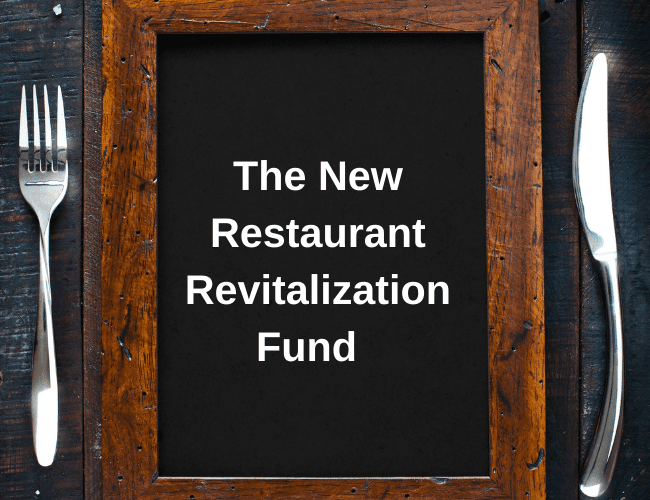
SBA is currently working on implementing the efforts. No official information has been provided by the SBA yet regarding full eligibility criteria, date to start accepting applications, guidance regarding the process and rules of applying, or distribution of grants.
We suggest applicants start preparations now based on some of the initial information about the program. We’ve provided some tips to get started at the end of this article. We also caution applicants that changes to the RRF program criteria and rules can happen at any time, as we have seen with other prior relief efforts.
Here is an initial high-level summary of the grant program.
General
- The first 21-days of the program, grant priority will be given to small businesses owned and controlled by women, veterans, or socially and economically disadvantaged small businesses.
- $5 billion of the RRF is carved out for businesses with gross receipts of $500,000 or less during 2019
- Grants will be available until the funds are depleted
- Businesses must submit a good faith certification that the grant is necessary to support ongoing operations and has not applied for, or received funding from, the Shuttered Venue Operators Grant
Who is eligible?
- Restaurants, including franchisees
- Other specified food businesses (food-trucks, caterers, bars, brewpubs, tasting rooms, etc.)
- Businesses operating in an airport terminal
Who is NOT eligible?
- State and local government-operated businesses
- Publicly-traded companies
- Companies that own or operate in more than 20 locations as of March 13, 2020, regardless of whether or not the locations do business under the same name
- Businesses who have received a grant under the Economic Aid to Hard-Hit Small Businesses, Non-Profits and Venues Act (aka Shuttered Venue Operators Grant), or those with a pending application for one, are not eligible
If I received a PPP loan(s), can I also apply for an RRF grant?
Yes, you can; however, you’ll need to subtract out any PPP loan funds you’ve received.
How much can I apply for?
The total grant amount an eligible business and any affiliated businesses can receive is $10 million AND is limited to $5 million per physical location for businesses with multiple locations. Also, the SBA may adjust the awards based on demand and other market-driven issues.
Eligible businesses can receive a grant equal to the amount of its pandemic-related revenue loss:
- Calculated by subtracting its 2020 gross receipts from its 2019 gross receipts.
- And, subtract Paycheck Protection Program (PPP) amounts received for BOTH first draw and second draw loans in 2020 and/or 2021.
The program also provides calculations for eligible entities not fully open for the entire year of 2019 or until 2020:
- If not in operation for the entirety of 2019 – calculate the difference between the average monthly gross receipts in 2019, multiplied by 12, and the average monthly gross receipts in 2020, multiplied by 12; or, an amount based on a formula the SBA will determine.
- If not until operation until 2020 and up to enactment date of the RRF (March 11, 2021) –eligible expenses that were incurred minus any gross receipts received; or an amount based on a formula the SBA will determine.
- If not in operation yet at the time of the application date but have incurred eligible expenses – can still receive funding, but can only apply for the amount of eligible incurred expenses; or an amount based on a formula the SBA will determine.
What do I have to spend the grant on?
Businesses can apply for “eligible expenses” incurred from February 15, 2020, to December 31, 2021, OR a date determined by the SBA. Eligible expenses include:
- Payroll costs and paid sick leave
- Mortgage payments, rent, utilities
- Maintenance expenses (includes construction/other costs to accommodate outdoor seating)
- Supplies (includes PPE and additional cleaning materials)
- Food and beverage expenses
- “Certain” covered supplier costs (SBA will need to clarify what “certain” is)
- Operational expenses
- Any other expenses the SBA determines is essential to maintain the business
Do I have to pay the grant back?
No. However, the RRF specifies that any grant funds a business does not use must be returned to the SBA. The same goes for any business that permanently closes before the end of the “covered period” (12/31/2021).
We also caution applicants to ensure they use the grant for its intended purpose and per SBA criteria, as you will be required to certify this. It is unknown if certain businesses will be audited or what the consequences may be if the business is found to have not followed the program rules.
Will I have to pay taxes on the grant?
No. The RRF grants are tax-free.
What should I do to get started now?
- Ensure you have a DUNS#. This is a unique number used to identify your organization, and you will be required to have one to apply for a grant. The federal government uses the DUNS# to track how federal money is allocated. A DUNS# is free.
- Ensure you are registered with the System for Award Management (SAM). This is the system used to “do business with the U.S. government,” including grants.
- Calculate your grant request amount and have all information to back up your calculation available. Talk with your accountant if you have questions. There are still many details in the program the SBA needs to clarify, so your accounting professional may not have all the answers until the SBA provides more guidance.
Additional resources:
- RestaurantsAct
- National Restaurant Association & Policy Brief
- Independent Restaurant Coalition & FAQ sheet
- American Rescue Plan Act of 2021, Legislation Text, Section 5003: Support for Restaurants



